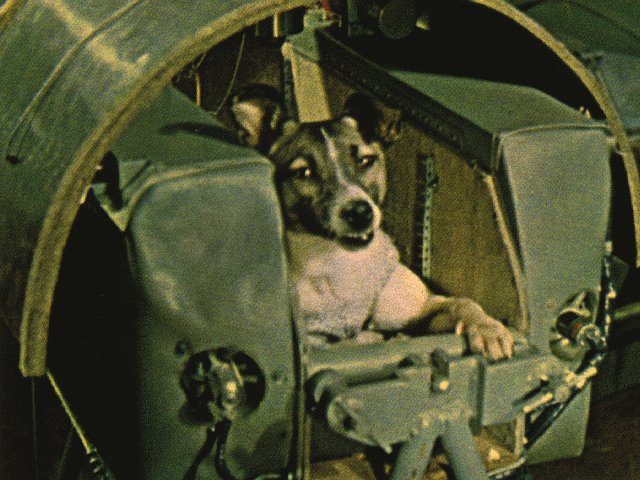Fifty-five years ago today — November 3, 1957 — the Soviet Union launched Sputnik 2 from the Baikonur Cosmodrome.

(Laika, in her padded cabin. Image from the National Space Science Data Center.)
Sputnik 2 is most famous for carrying a dog, Laika, the first living thing in orbit.
The first being to travel to outer space was a female part-Samoyed terrier originally named Kudryavka (Little Curly) but later renamed Laika (Barker). She weighed about 6 kg. The pressurized cabin on Sputnik 2 allowed enough room for her to lie down or stand and was padded. An air regeneration system provided oxygen; food and water were dispensed in a gelatinized form. Laika was fitted with a harness, a bag to collect waste, and electrodes to monitor vital signs. The early telemetry indicated Laika was agitated but eating her food. There was no capability of returning a payload safely to Earth at this time, so it was planned that Laika would run out of oxygen after about 10 days of orbiting the Earth.
Unfortunately, part of the spacecraft did not separate, which interfered with the cooling system. In addition, some thermal insulation came loose during launch. As a result, it is believed that Laika “only survived a day or two” before her spacecraft fell back to Earth.














